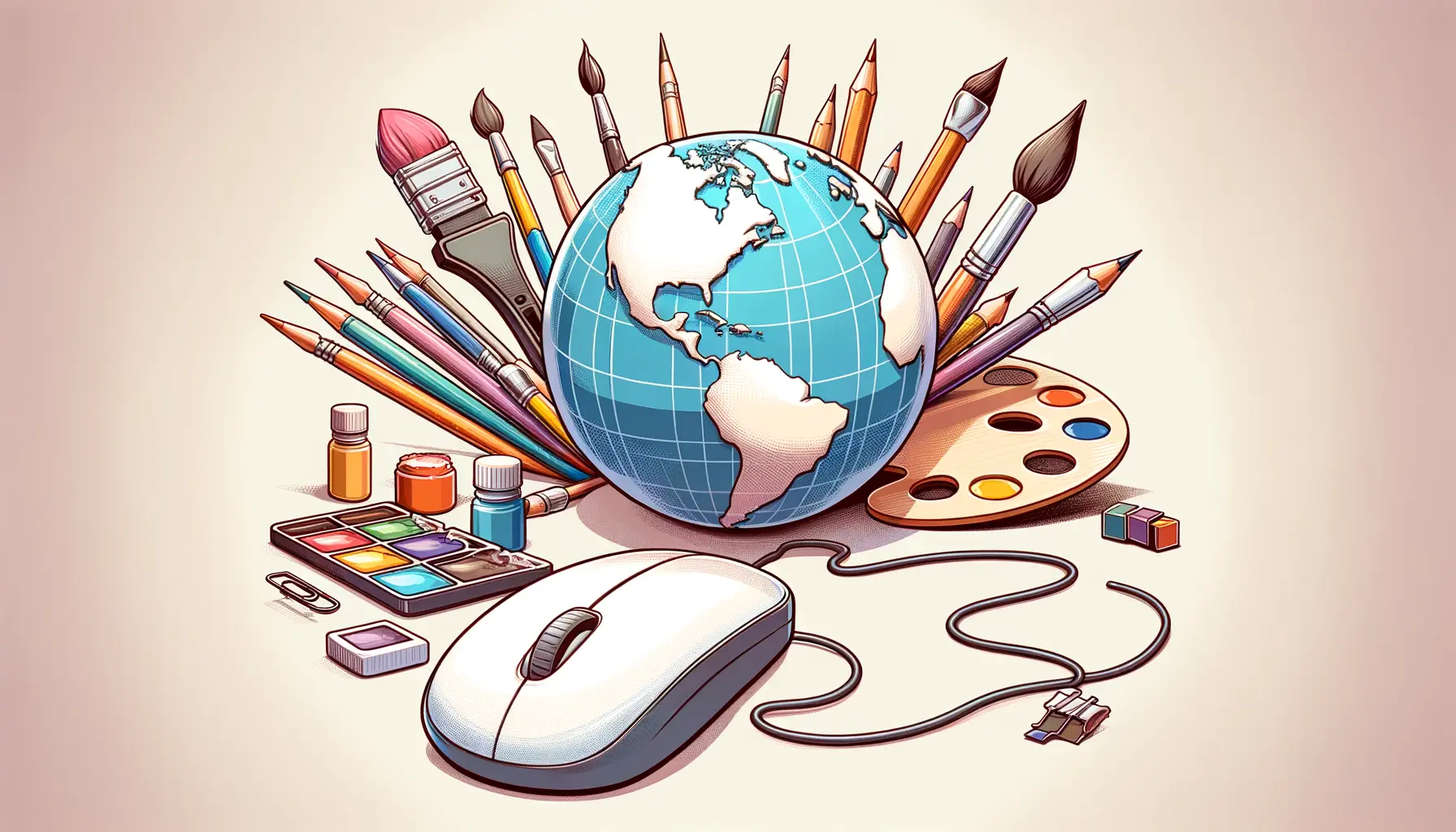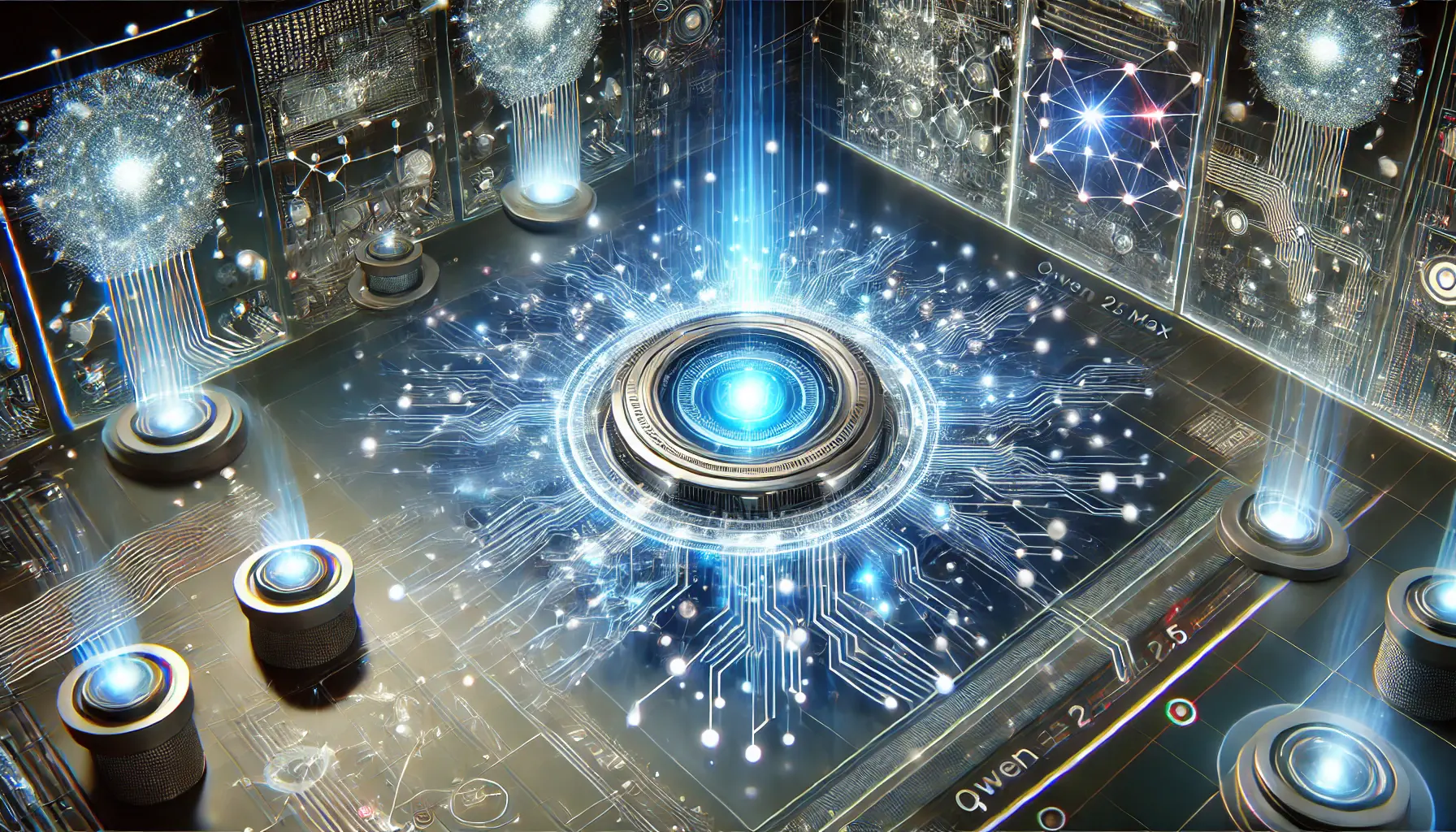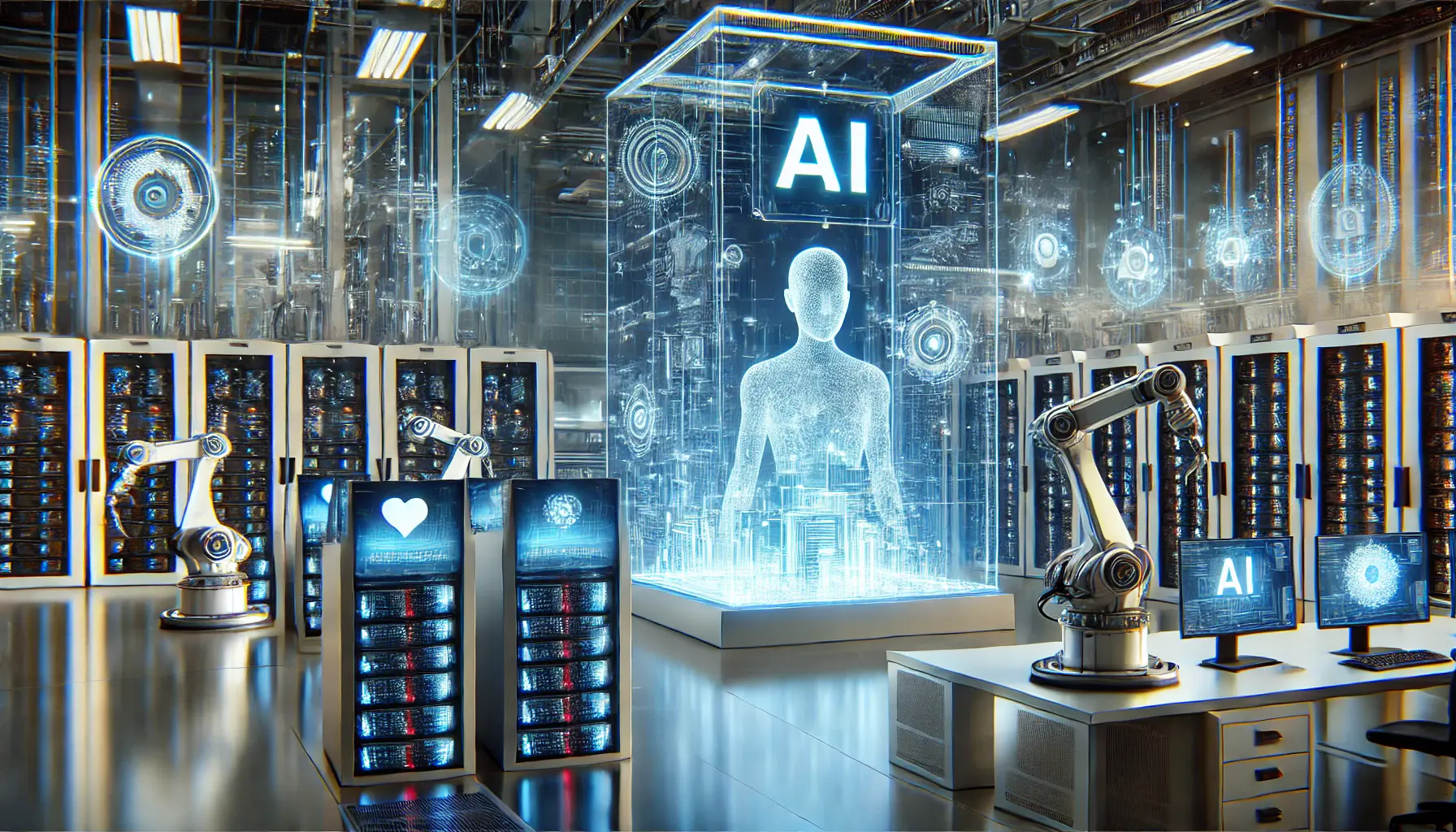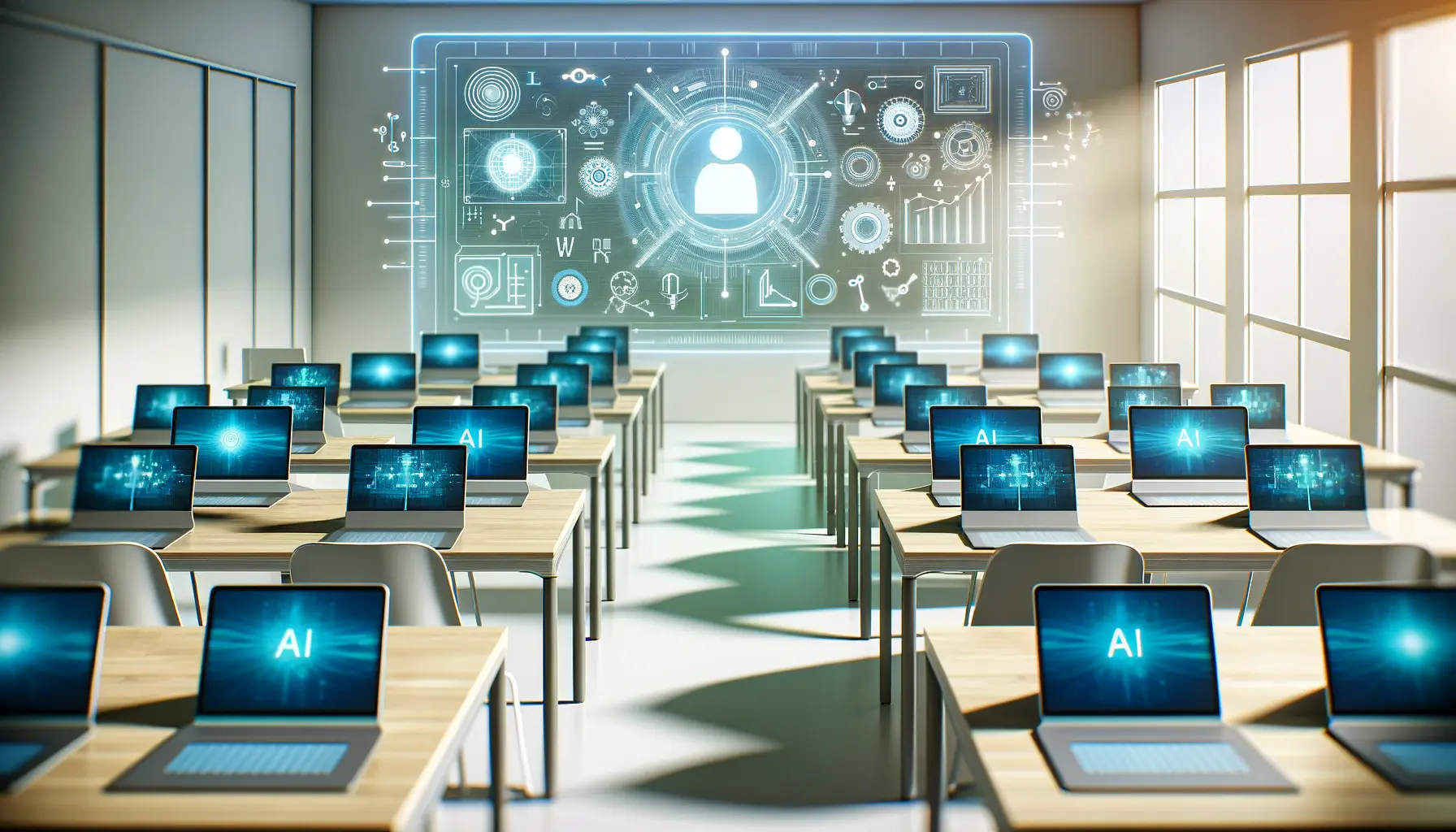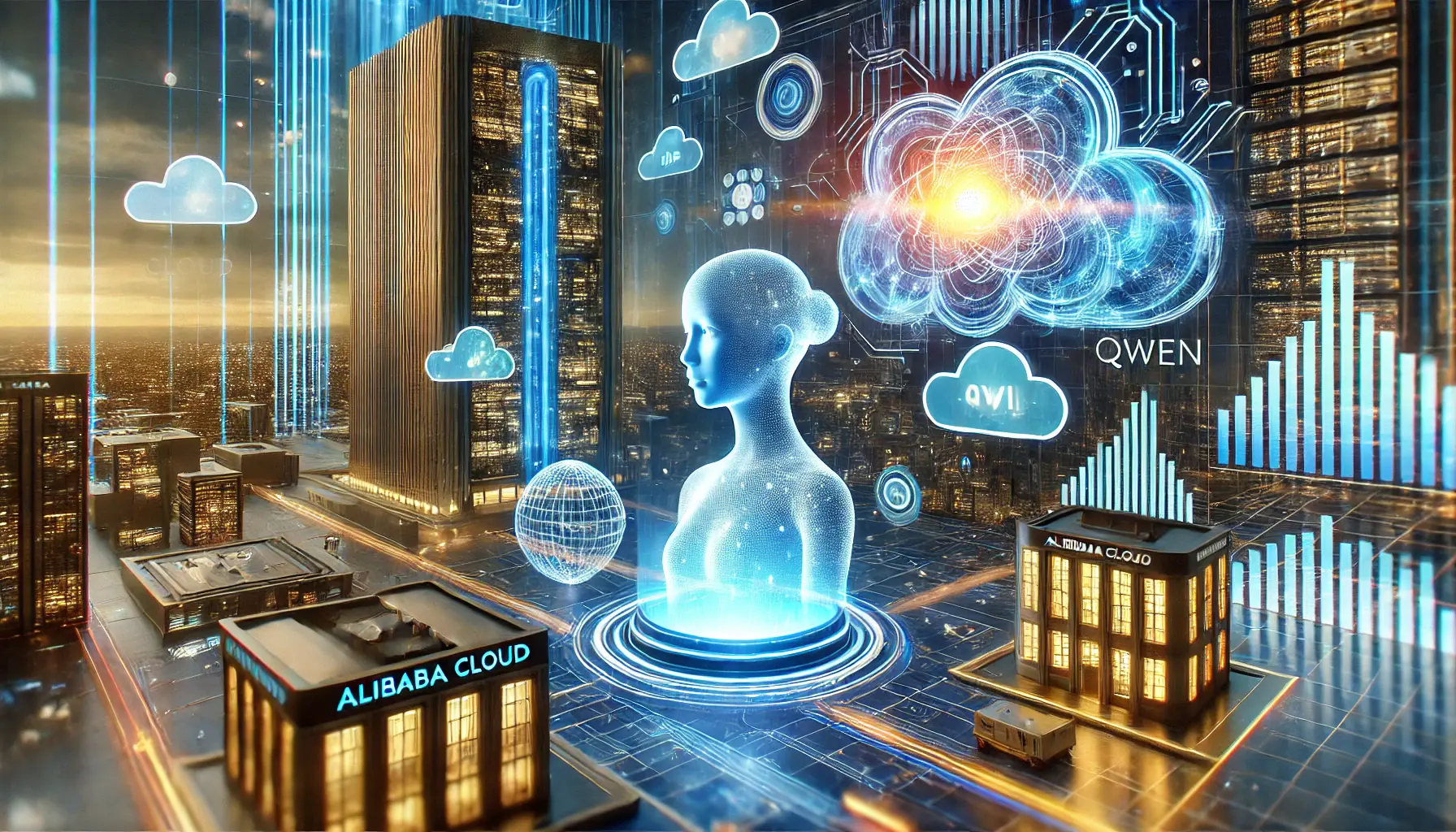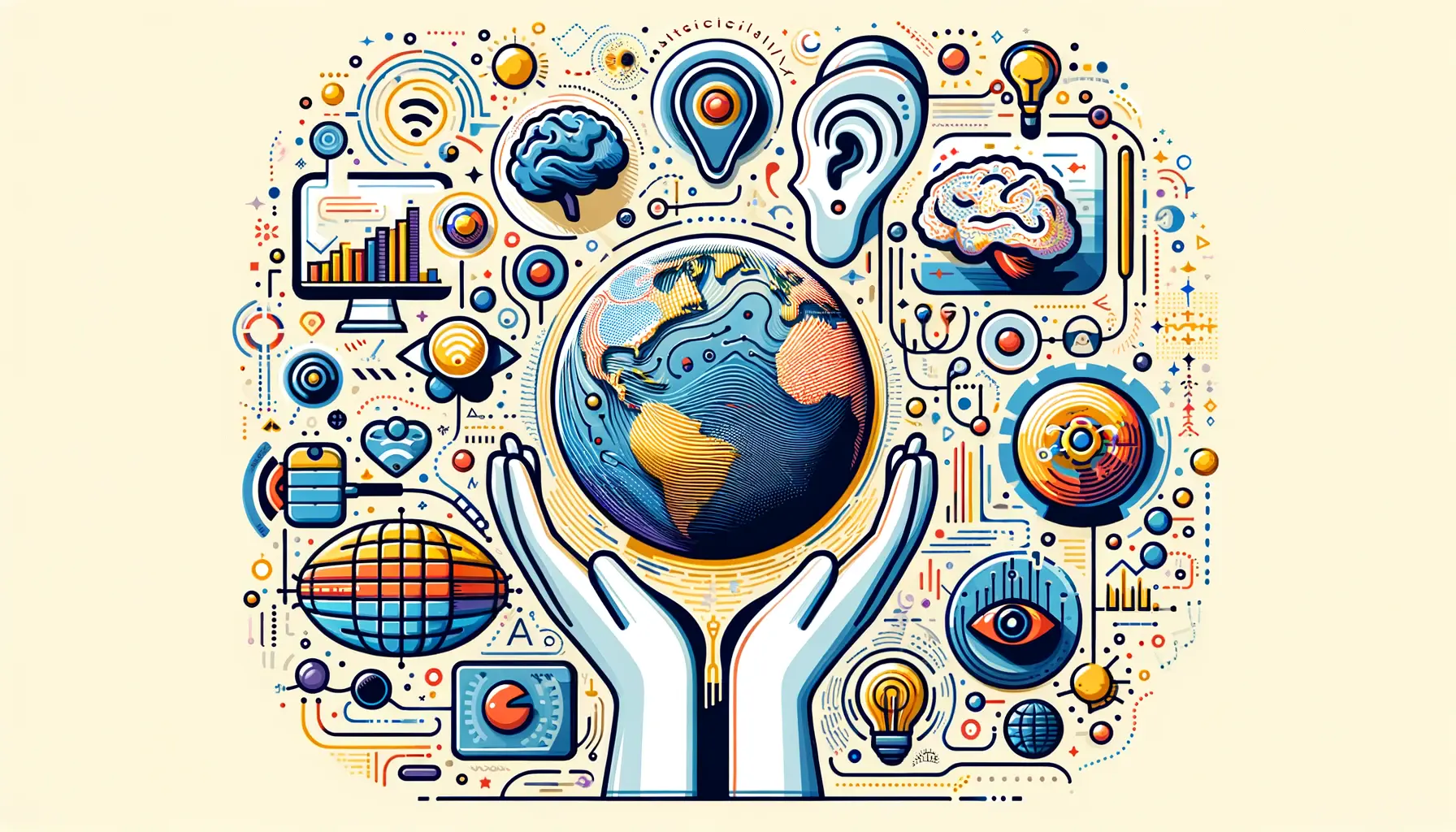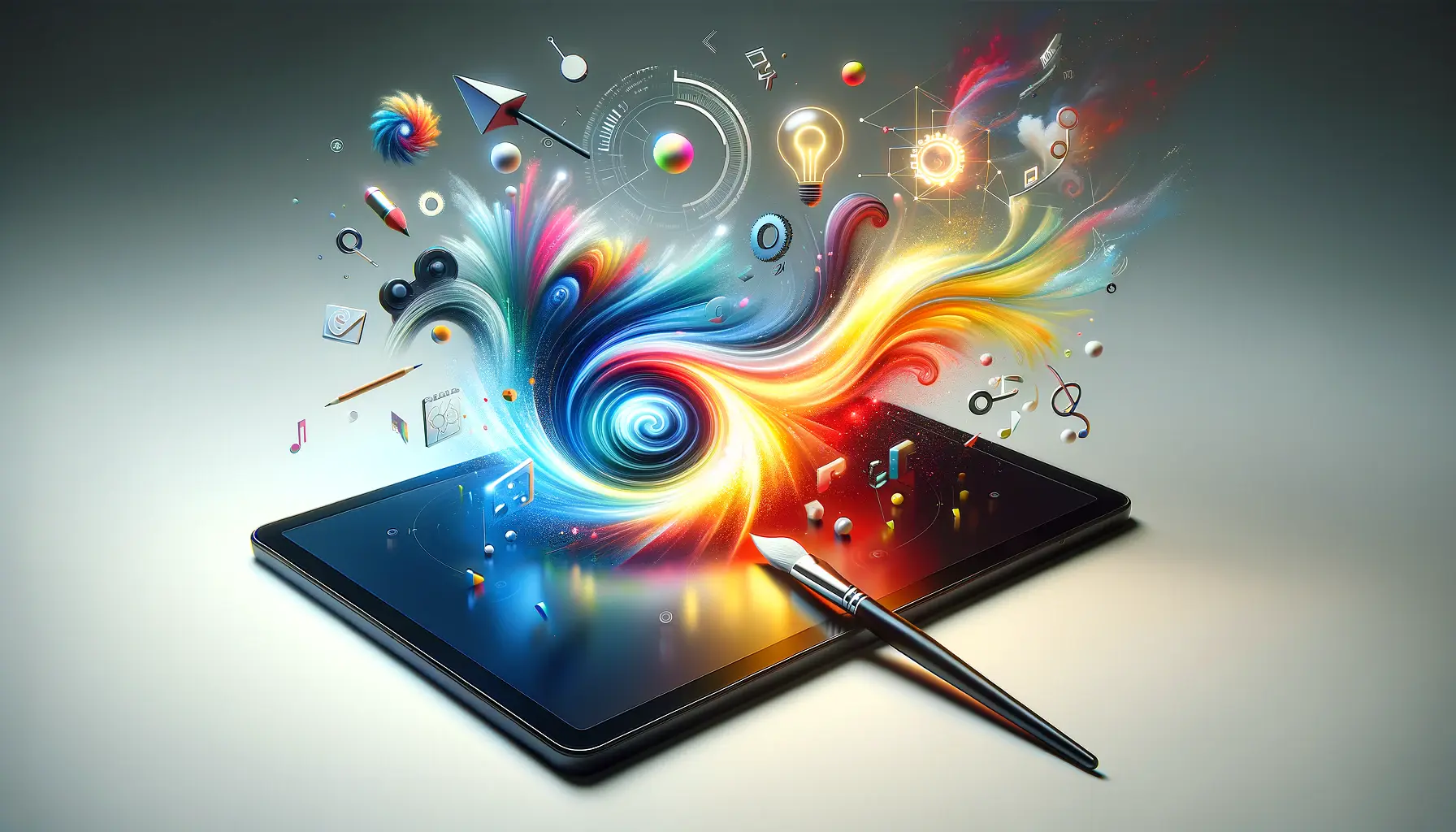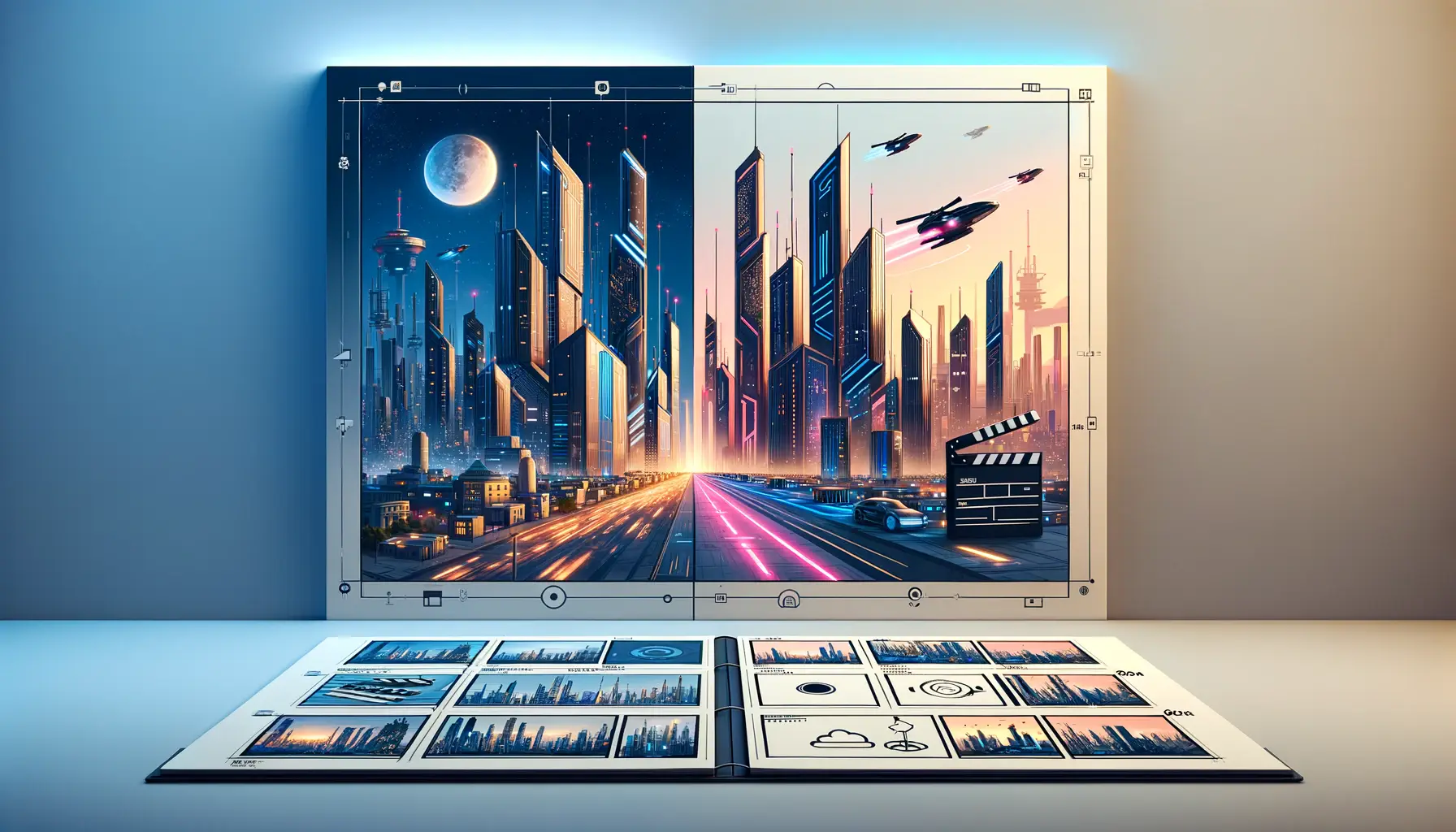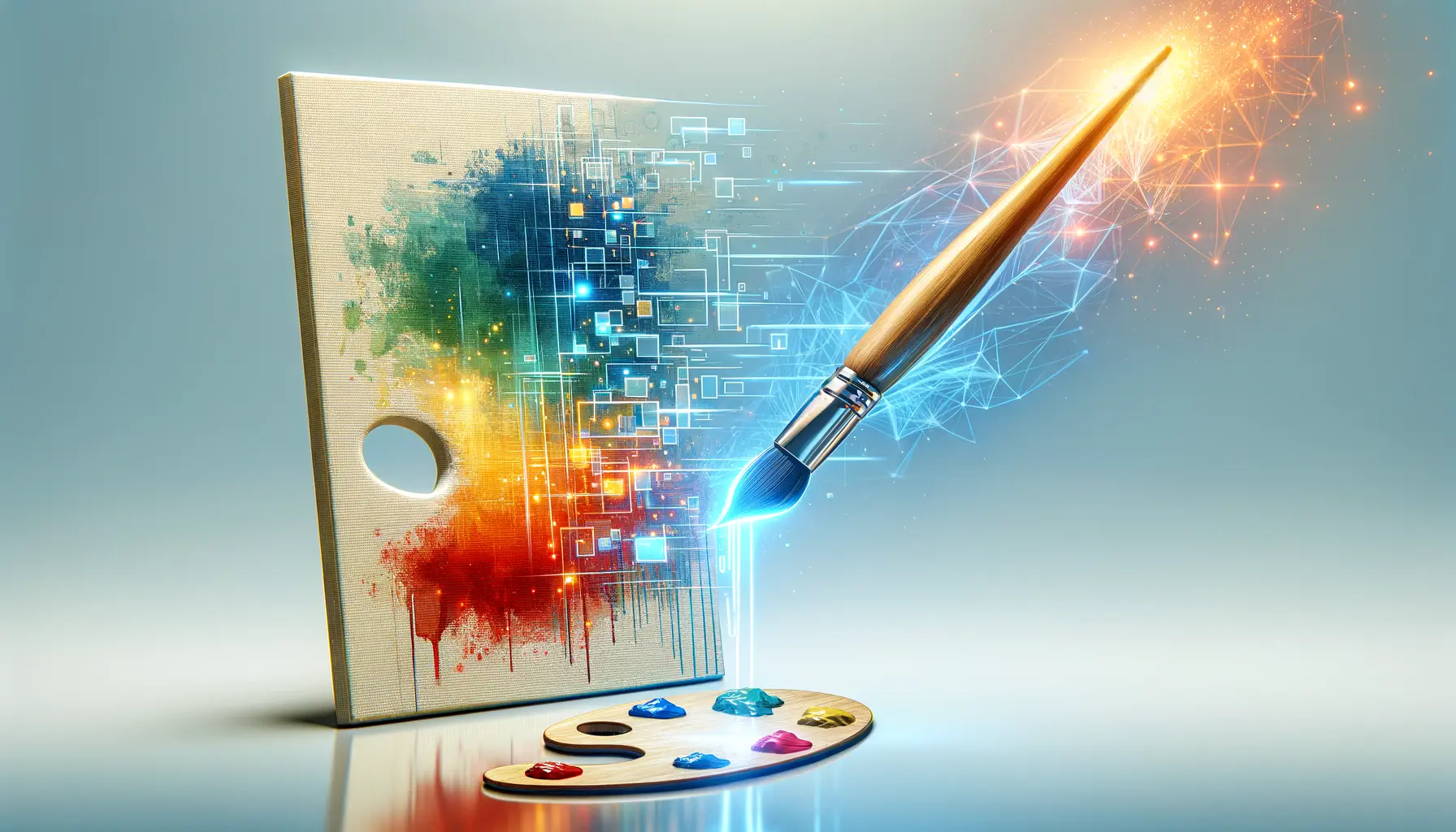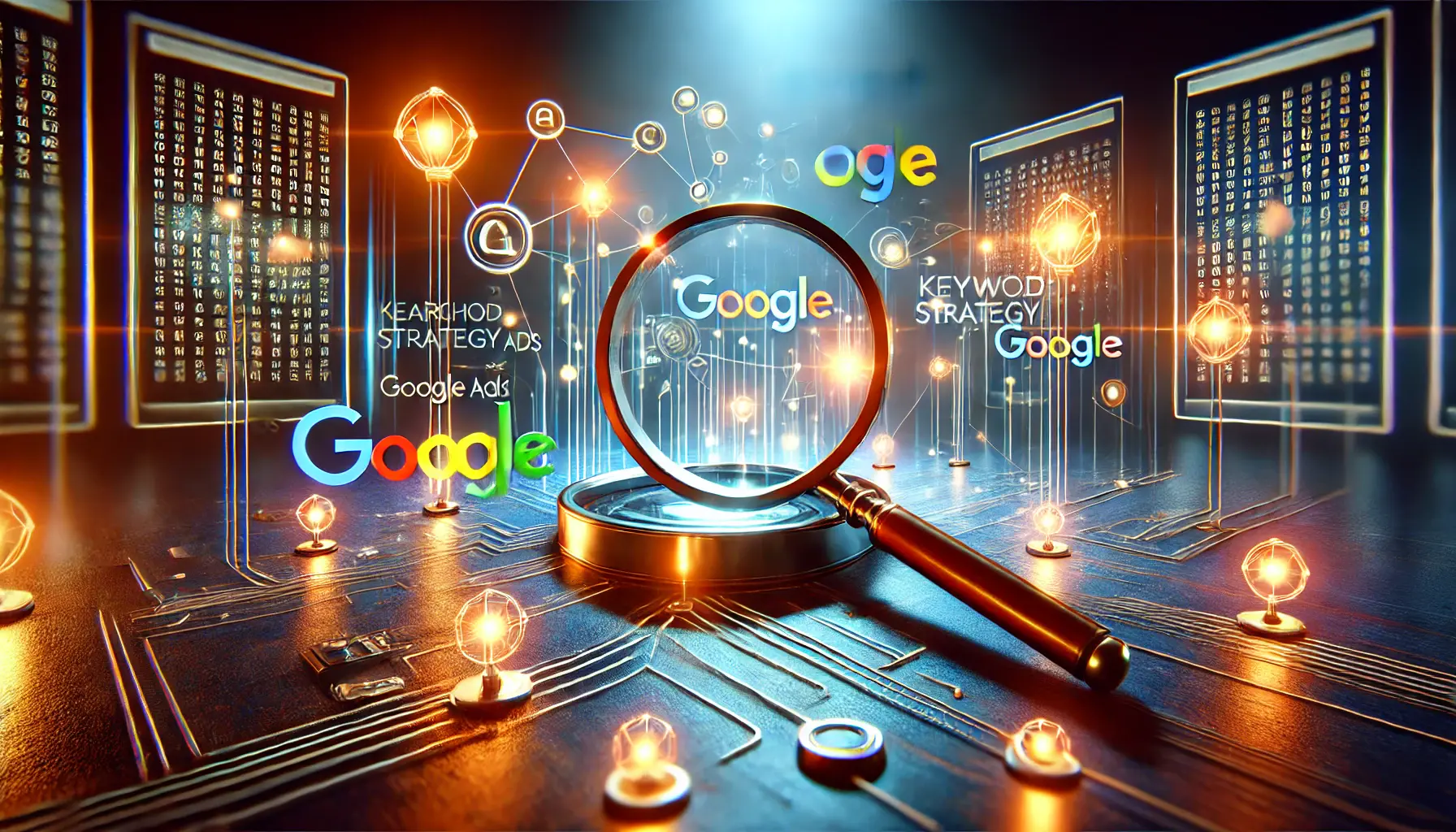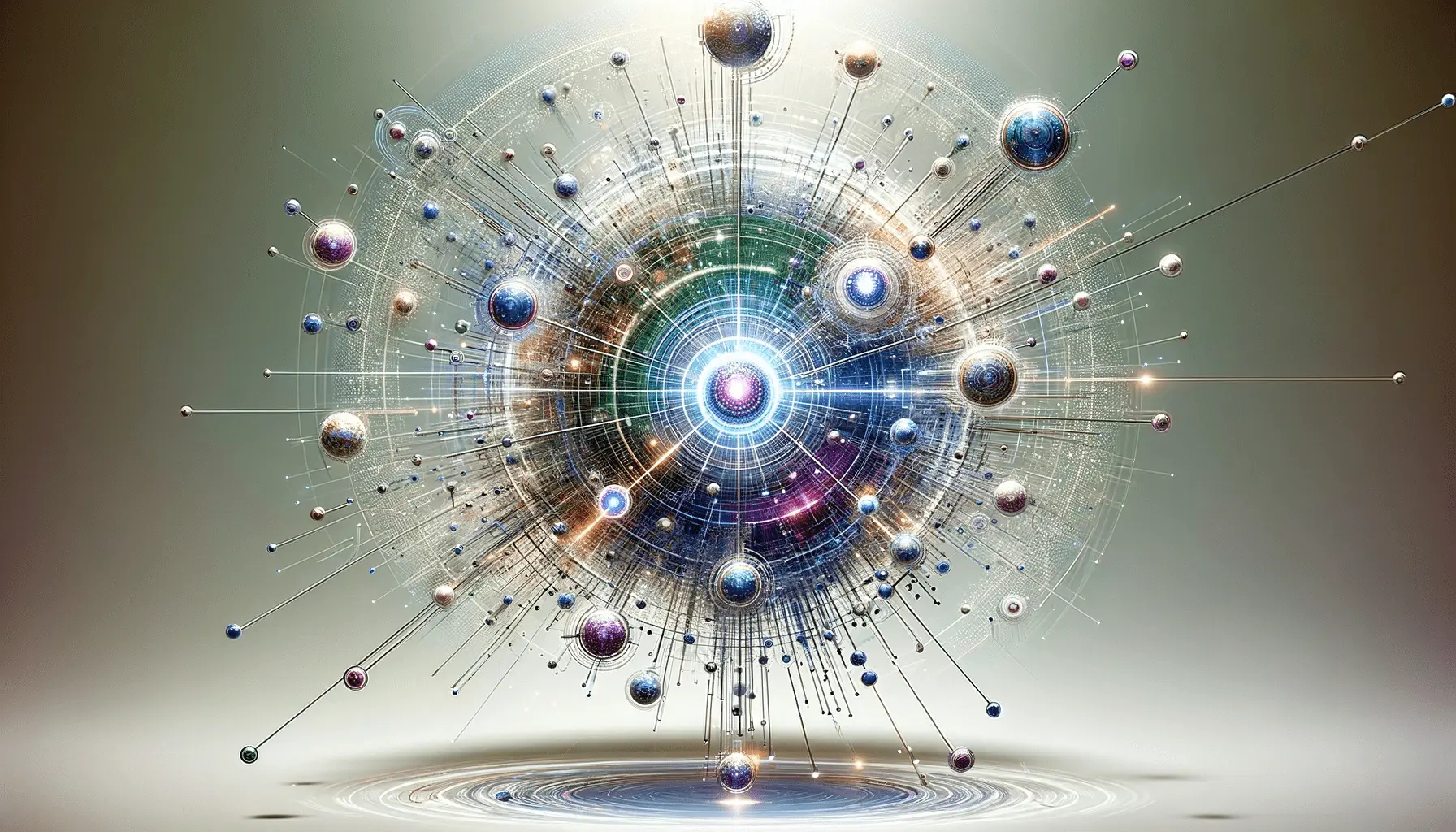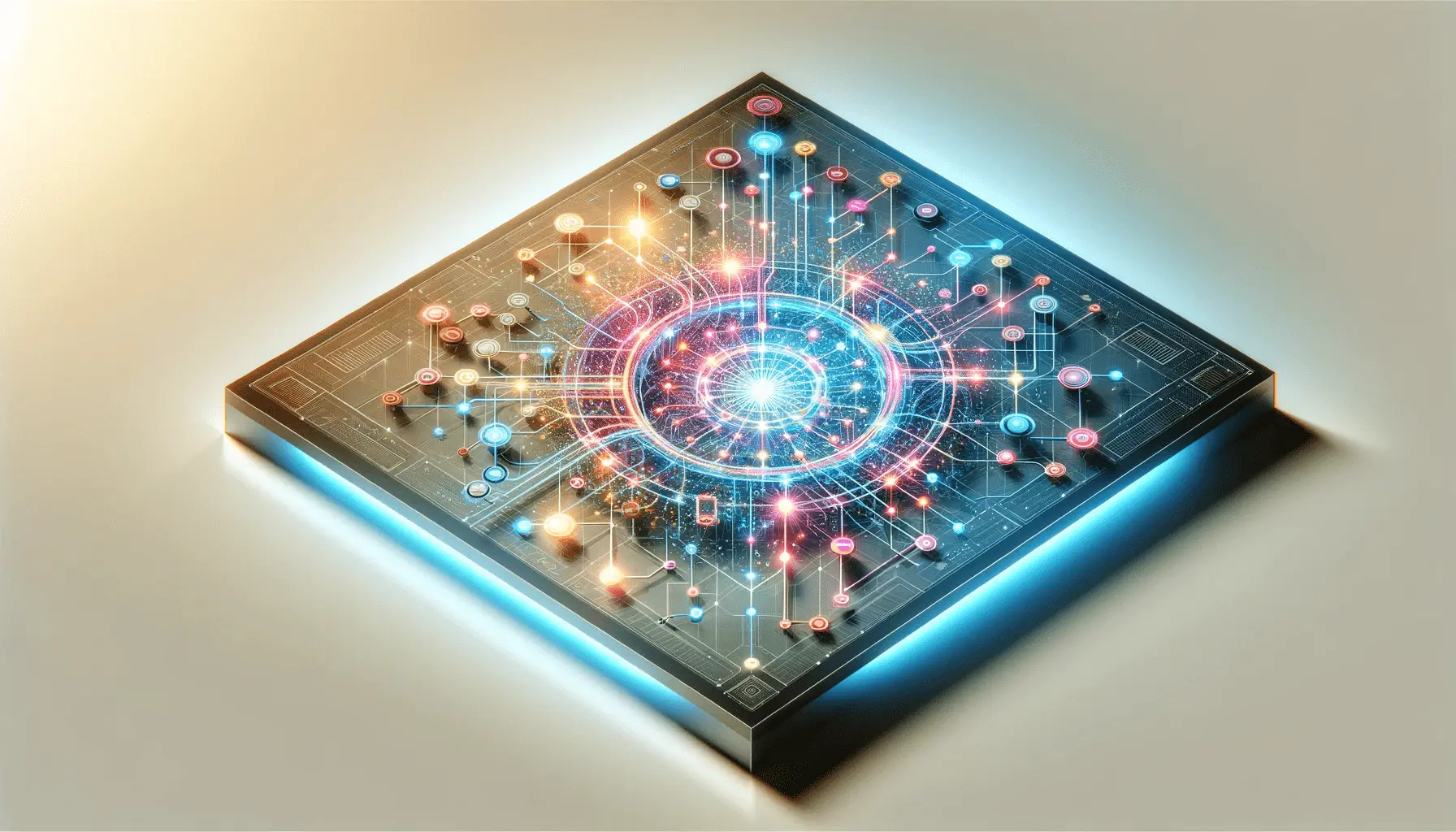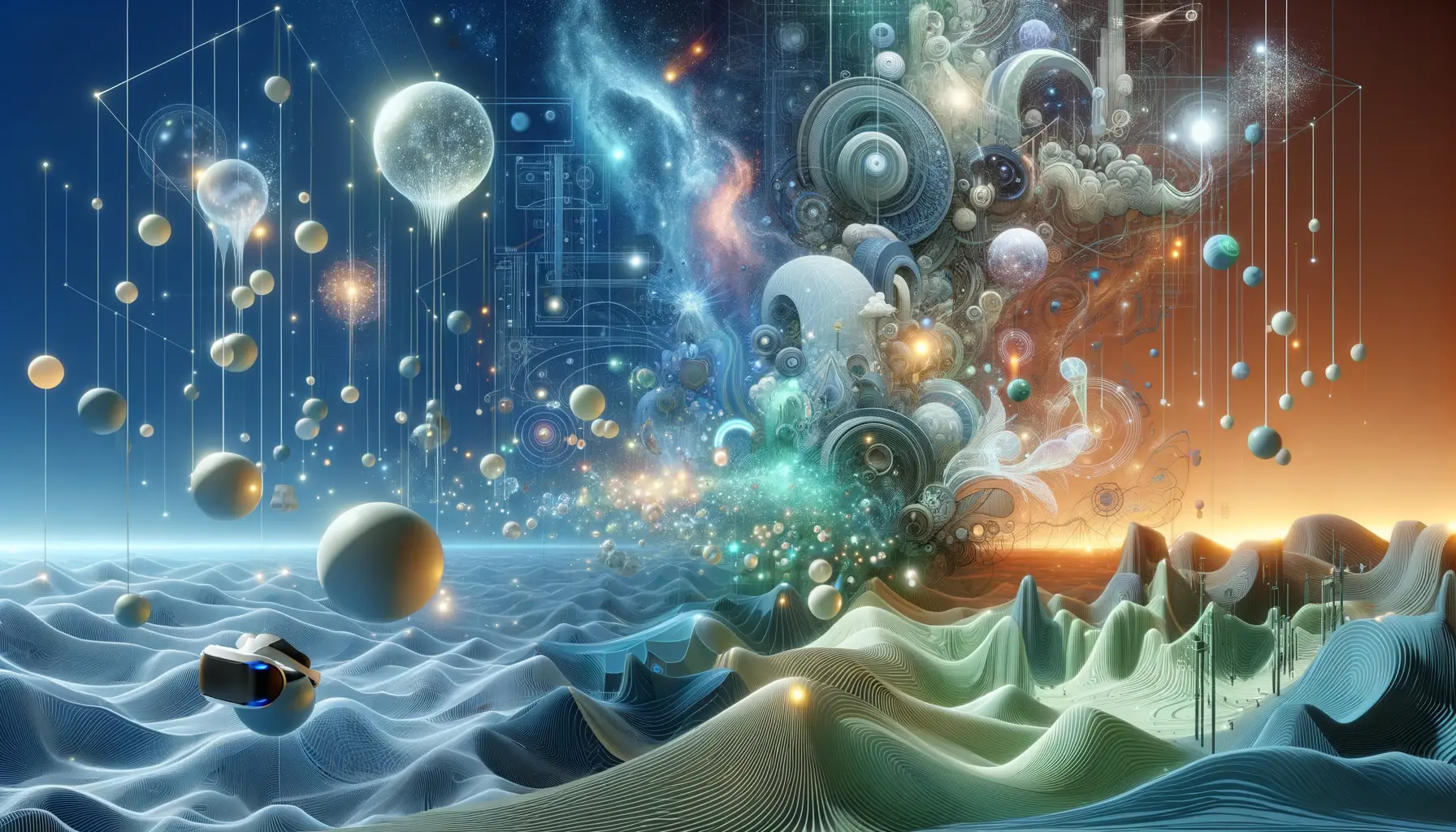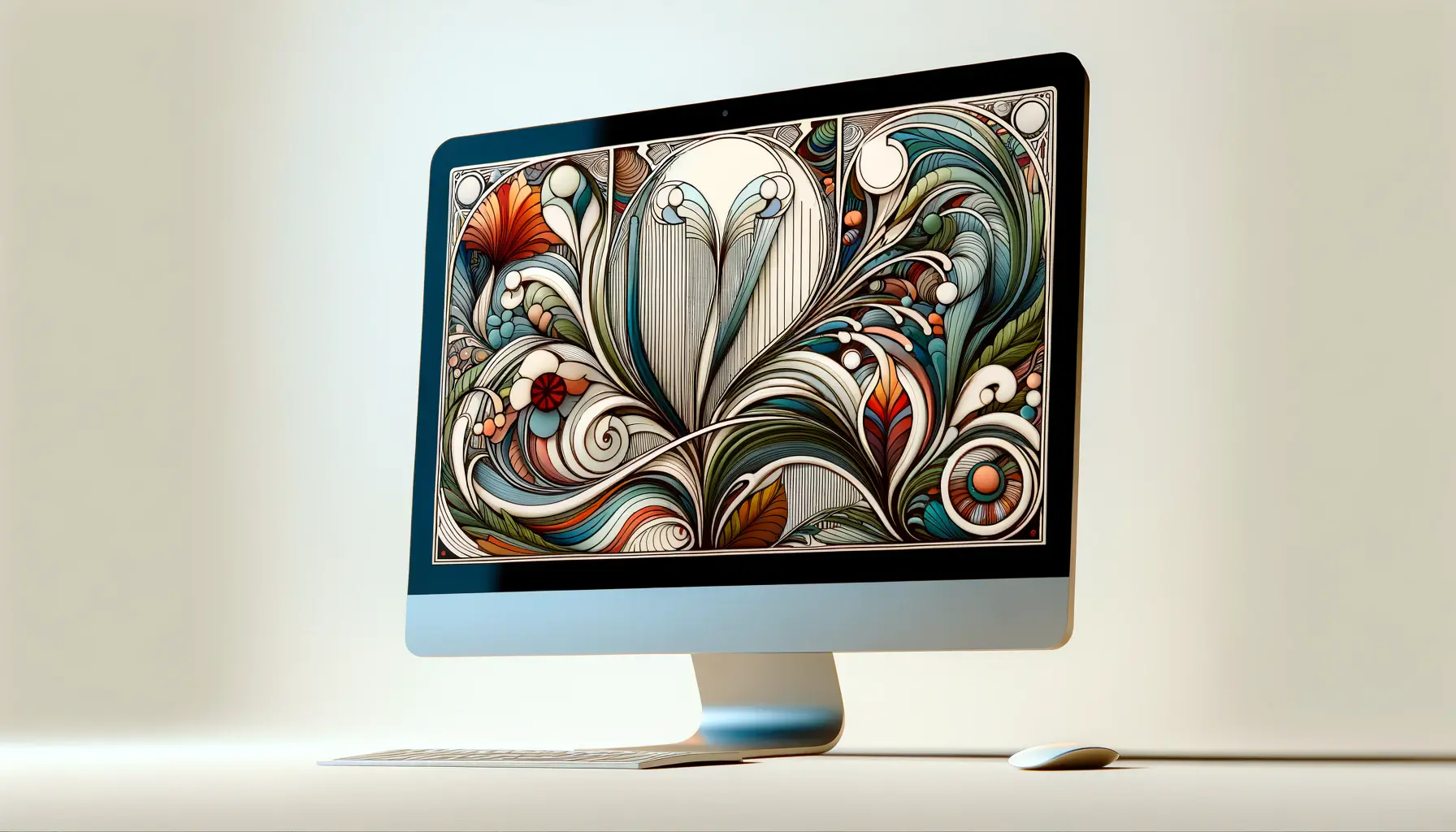The advent of artificial intelligence in the realm of art has ushered in a new era where creativity is no longer confined to the traditional boundaries set by human capabilities.
DALL-E, OpenAI’s groundbreaking AI, has been at the forefront of this revolution, transforming simple textual descriptions into complex, vivid artworks.
This technology not only democratizes art creation but also raises important questions about accessibility in the digital age.
How can we ensure that the wonders of AI art are available to everyone, regardless of their background or abilities?
This article delves into the heart of DALL-E’s accessibility, exploring how it can make AI art universal and truly inclusive.
Accessibility in technology is a critical issue that affects millions of people around the world.
For many, digital advancements offer a promise of empowerment and equal opportunities.
However, this promise can only be fulfilled if these technologies are designed with accessibility in mind.
In the context of DALL-E and AI-generated art, accessibility means more than just making the technology available to a wide audience.
It involves creating interfaces, tools, and platforms that are easily navigable by people with disabilities, ensuring that the creative process is inclusive and that the art produced is accessible to all.
- Understanding DALL-E and Its Impact on Art Creation
- Enhancing Accessibility Through User Interface Design
- Addressing Ethical Considerations in AI Art
- Collaboration Between AI and Artists
- Global Accessibility and Cultural Impact
- Future Directions in AI Art Accessibility
- Empowering Creativity Through Education and Community
- Charting the Future of Accessibility in AI Art
- DALL-E Accessibility: Your Questions Answered
Understanding DALL-E and Its Impact on Art Creation
The Genesis of DALL-E
The inception of DALL-E by OpenAI marked a significant milestone in the field of artificial intelligence.
Named whimsically after the famous surrealist artist Salvador Dalí and the beloved Pixar character WALL-E, DALL-E was designed to interpret and visualize textual descriptions into detailed images.
This AI model leverages deep learning algorithms to understand complex requests and generate art that spans a wide range of styles and subjects, from the realistic to the fantastical.
The implications of such technology are profound, offering a glimpse into a future where the barriers between imagination and visual representation are seamlessly bridged.
However, the revolutionary capabilities of DALL-E extend beyond just the creation of art.
They touch upon the very essence of creativity and its accessibility.
By enabling users to create art through simple text prompts, DALL-E democratizes artistic expression, making it possible for individuals without traditional art skills or training to bring their visions to life.
This aspect of DALL-E not only challenges the conventional boundaries of art but also opens up a world of possibilities for creative expression to a broader, more diverse audience.
Breaking Down Barriers in Art
The advent of DALL-E and similar AI technologies has the potential to break down longstanding barriers in the art world.
Traditionally, art creation has been limited by several factors, including skill level, access to materials, and physical ability.
DALL-E’s text-to-image generation capability fundamentally alters this landscape, offering a platform where the only limit is one’s imagination.
This shift has significant implications for accessibility, as it provides a means for individuals with disabilities or those lacking in conventional artistic skills to participate in the creative process.
Moreover, DALL-E’s impact on accessibility is not just about enabling new creators.
It also involves the consumption of art.
With AI-generated art, there’s the potential to create more inclusive content that reflects a wider range of experiences and perspectives.
This inclusivity in content creation is crucial for building a more accessible and diverse cultural landscape.
By leveraging DALL-E, creators can produce works that resonate with underrepresented groups, thereby fostering a sense of belonging and representation in the digital art space.
The transformative potential of DALL-E lies not only in its ability to generate art from text but also in its capacity to make the art creation process more accessible and inclusive, challenging traditional barriers and opening up new avenues for creative expression.
Enhancing Accessibility Through User Interface Design
The role of user interface (UI) design in enhancing the accessibility of DALL-E cannot be overstated.
A well-designed UI can significantly lower the barriers to entry for users with diverse abilities, ensuring that the technology is not just available but truly accessible to everyone.
This involves a meticulous approach to design, where every element of the user experience is crafted with accessibility in mind.
Key considerations in UI design for accessibility include simplicity, clarity, and consistency.
These principles ensure that users can navigate the platform with ease, regardless of their familiarity with technology or any disabilities they might have.
For DALL-E, this means creating a user interface that is intuitive and straightforward, minimizing cognitive load and maximizing usability.
Principles of Accessible UI Design
- Simplicity: The UI should be uncluttered and straightforward, avoiding unnecessary complexity that can confuse or overwhelm users.
- Clarity: Instructions, labels, and feedback should be clear and concise, using language that is easy to understand.
- Consistency: The design should be consistent across the platform, with familiar patterns and conventions that users can quickly learn and remember.
- Feedback: Users should receive immediate and clear feedback on their actions, helping them understand the system’s responses and how to proceed.
- Customization: Offering customization options, such as adjustable text sizes and color contrasts, can make the platform more accessible to users with visual impairments.
Implementing Accessibility Features
Implementing features that enhance accessibility is crucial for making DALL-E universally usable.
This includes the integration of assistive technologies such as screen readers, which can help visually impaired users navigate the platform and understand the content.
Voice recognition software can also play a significant role, allowing users to interact with DALL-E through voice commands, thereby making the platform more accessible to individuals with motor impairments or those who find typing challenging.
Another important aspect is the provision of alternative text for images generated by DALL-E.
Alt text descriptions enable users who are blind or have low vision to understand the content of the images, ensuring that the art created by DALL-E is accessible to all.
This not only enhances the user experience for individuals with disabilities but also aligns with broader web accessibility standards, promoting inclusivity in the digital art space.
Incorporating accessibility into the UI design of DALL-E is not just about adhering to standards; it’s about creating an inclusive environment where art and creativity are accessible to everyone, regardless of their abilities or challenges.
Addressing Ethical Considerations in AI Art
The integration of AI in art creation, exemplified by DALL-E, brings to the forefront a host of ethical considerations that must be addressed to ensure the technology is used responsibly and inclusively.
These concerns range from the authenticity and originality of AI-generated art to the implications of such technology on human artists and cultural representation.
As DALL-E democratizes art creation, it also raises questions about the value of art and the role of the artist in the creative process.
Ensuring that AI art remains accessible and beneficial to all involves navigating these ethical landscapes with care and consideration.
Authenticity and Originality
The question of authenticity and originality in AI-generated art is a pivotal ethical concern.
With DALL-E capable of producing art based on a vast database of existing artworks, the line between inspiration and imitation becomes blurred.
It’s essential to establish guidelines that ensure AI-generated art respects the originality of human creators, avoiding plagiarism and promoting a culture of creativity that values unique contributions.
One approach is to design AI systems like DALL-E to reference and learn from a broad spectrum of art while ensuring that the output is sufficiently transformed, creating something new and distinct.
This not only addresses ethical concerns but also pushes the boundaries of creativity, encouraging the production of art that is both innovative and respectful of human artistic heritage.
Impact on Human Artists
The accessibility of AI art generators like DALL-E has the potential to disrupt traditional art markets and the livelihood of human artists.
While AI democratizes art creation, it’s crucial to consider its impact on professional artists and ensure that the technology complements rather than replaces human creativity.
Strategies to achieve this balance include promoting collaborations between AI and artists, where AI serves as a tool that enhances rather than diminishes the role of the human artist.
Such collaborations can lead to new forms of art that combine human creativity with AI’s capabilities, offering fresh perspectives and expanding the horizons of what is considered possible in art.
By positioning DALL-E as a partner in the creative process, we can foster an environment where technology supports and amplifies human creativity, ensuring that the art world remains vibrant and diverse.
Cultural Representation and Bias
Another critical ethical consideration is ensuring that AI-generated art promotes diversity and avoids perpetuating biases.
AI systems, including DALL-E, learn from datasets that may contain biased representations of cultures, genders, and ethnicities.
It’s vital to curate these datasets carefully and develop algorithms that are aware of and can mitigate these biases.
By promoting diversity in the input data and actively working to eliminate biases, DALL-E can contribute to a more inclusive art world where all voices are heard and represented.
This not only enhances the accessibility of AI art but also ensures that it reflects the rich tapestry of human experience, promoting understanding and appreciation across different cultures and communities.
Addressing ethical considerations in AI-generated art is crucial for ensuring that technologies like DALL-E enhance rather than undermine the value of creativity, promoting an inclusive and diverse art world.
Collaboration Between AI and Artists
The collaboration between AI and human artists represents a frontier in the evolution of art, blending traditional creativity with the capabilities of modern technology.
This synergy opens up new avenues for artistic expression and innovation, allowing for the creation of works that were previously unimaginable.
By exploring the potential of AI as a collaborative partner, artists can push the boundaries of their creativity, exploring new themes, styles, and techniques.
However, the success of this collaboration hinges on the ability of both artists and AI tools like DALL-E to complement each other’s strengths, creating a harmonious relationship that enhances the creative process.
This partnership not only expands the scope of what can be achieved in art but also addresses some of the ethical concerns related to AI’s role in the creative industries.
Enhancing Creative Possibilities
- Expanding Artistic Vision: AI can process and generate ideas at a scale and speed beyond human capabilities, offering artists a vast new palette of possibilities to explore.
- Experimentation with Styles: Artists can collaborate with AI to experiment with an array of styles and techniques, some of which may be challenging or time-consuming to achieve manually.
- New Forms of Expression: AI’s ability to interpret and visualize complex concepts can lead to the creation of new forms of art that challenge traditional definitions and expectations.
Addressing Challenges in Collaboration
While the potential for collaboration between AI and artists is vast, there are challenges to navigate.
One of the primary concerns is ensuring that the AI’s contributions are aligned with the artist’s vision and intentions.
This requires a level of control and input from the artist to guide the AI’s output, ensuring that the final artwork reflects the human creator’s essence and message.
Moreover, there’s the challenge of accessibility and usability of AI tools like DALL-E for artists.
Ensuring that these tools are user-friendly and accessible to artists with varying levels of technical expertise is crucial for fostering successful collaborations.
This involves designing interfaces and workflows that are intuitive and supportive of the creative process, allowing artists to focus on their vision rather than navigating complex software.
Case Studies of Successful Collaborations
There are numerous examples of successful collaborations between AI and human artists that highlight the potential of this partnership.
For instance, artists have used DALL-E to generate initial concepts and visuals which are then refined and integrated into larger works, combining the AI’s generative capabilities with the artist’s creative direction and skill.
These collaborations have resulted in artworks that are not only visually stunning but also rich in meaning and complexity, showcasing the unique contributions of both human and machine to the creative process.
Another example involves using AI to create interactive art installations, where the AI responds to audience input to create dynamic, evolving pieces.
These installations demonstrate the potential of AI to engage with audiences in new ways, creating immersive experiences that are shaped by the interaction between the artwork, the artist, and the viewer.
The collaboration between AI and human artists opens up new dimensions in art, offering opportunities for innovation and expression that enrich the cultural landscape.
Global Accessibility and Cultural Impact
The global accessibility of AI art, particularly through platforms like DALL-E, has a profound cultural impact, bridging geographical and cultural divides to create a more interconnected and diverse artistic landscape.
This democratization of art creation and consumption allows for a richer exchange of ideas and perspectives, fostering a global dialogue that enriches the cultural fabric of societies worldwide.
However, achieving true global accessibility involves addressing both technological and cultural barriers, ensuring that AI art platforms are not only available but also relevant and respectful to diverse audiences.
This requires a nuanced understanding of cultural differences and a commitment to inclusivity in the development and deployment of AI art technologies.
Overcoming Technological Barriers
- Internet Accessibility: Ensuring that AI art platforms are accessible in regions with limited internet connectivity is crucial for global accessibility. This may involve optimizing platforms for low-bandwidth environments or developing offline capabilities.
- Language Support: Providing multilingual support on AI art platforms enables users from different linguistic backgrounds to engage with the technology, removing language as a barrier to creativity.
- Device Compatibility: Making AI art platforms compatible with a wide range of devices, including smartphones and tablets, can significantly increase their accessibility, allowing users from diverse economic backgrounds to participate in the creation and appreciation of AI art.
Addressing Cultural Sensitivities
Respecting cultural sensitivities is paramount in the global dissemination of AI art.
This involves ensuring that the content generated by AI, such as DALL-E, is culturally appropriate and sensitive to the values and norms of different societies.
It also means providing tools and features that allow users to create art that reflects their cultural heritage and personal experiences.
Moreover, engaging with local communities and artists can provide valuable insights into cultural nuances, guiding the development of AI art platforms to be more inclusive and representative.
This engagement can take the form of collaborations, workshops, and feedback sessions that help tailor the technology to meet the needs and expectations of users from diverse cultural backgrounds.
Cultural Exchange and Representation
The potential for AI art to facilitate cultural exchange and representation is immense.
By providing a platform where artists from various cultural backgrounds can share their work, AI art technologies like DALL-E can help promote understanding and appreciation across cultures.
This exchange not only enriches the global art scene but also supports the preservation and celebration of cultural identities in the digital age.
Furthermore, AI art can play a role in highlighting and addressing social issues, using the universal language of art to bring attention to matters of global concern.
Through collaborative projects and initiatives, AI art platforms can contribute to a more socially aware and culturally diverse artistic community, underscoring the power of art as a catalyst for change and unity.
Global accessibility and cultural impact are key considerations in the evolution of AI art, with the potential to create a more inclusive and interconnected world through the universal language of creativity.
Future Directions in AI Art Accessibility
The trajectory of AI art and its accessibility is poised for significant evolution, with emerging technologies and innovative practices shaping the future of how we create and interact with art.
As AI continues to permeate the artistic landscape, the focus on making these technologies more accessible and inclusive becomes increasingly important.
This future direction not only promises to expand the boundaries of creative expression but also to ensure that the benefits of AI art are shared by all, regardless of their background or abilities.
Anticipating the future of AI art accessibility involves understanding the potential advancements in technology, as well as the societal shifts that might influence how these tools are used and who has access to them.
It’s a vision that encompasses not just the technical aspects of AI and art creation but also the ethical, cultural, and social dimensions of accessibility.
Technological Advancements
- Enhanced AI Capabilities: Future AI systems will likely possess even more sophisticated understanding and creative capabilities, enabling them to produce art that is increasingly complex and nuanced. This evolution could further democratize art creation, making it possible for anyone to realize their creative visions with unprecedented detail and depth.
- Improved User Interfaces: Advances in UI design will make AI art platforms more intuitive and easier to use, lowering the barrier for entry for individuals with diverse abilities and tech-savviness. This includes the development of more adaptive and responsive interfaces that can cater to the specific needs of users.
- Greater Integration with Assistive Technologies: Future AI art platforms will likely feature better integration with assistive technologies, making them more accessible to users with disabilities. This could include advanced voice control, eye-tracking capabilities, and more seamless interactions with screen readers and other accessibility tools.
Societal and Cultural Shifts
- Increasing Awareness of Accessibility: As society becomes more aware of the importance of accessibility, there will be greater demand for AI art platforms that are inclusive and equitable. This societal shift will drive innovation in accessibility features and practices, ensuring that AI art is accessible to a wider audience.
- Collaborative Artistic Practices: The future of AI art will likely see an increase in collaborative projects that bring together AI and human artists from diverse backgrounds. These collaborations will not only produce innovative works of art but also foster a culture of inclusivity and mutual learning.
- Cultural Representation in AI: There will be a growing emphasis on ensuring that AI art reflects a diverse range of cultural perspectives. This involves curating datasets and designing algorithms that are inclusive and representative of the global diversity of human experience.
Regulatory and Ethical Frameworks
As AI art becomes more prevalent, the development of regulatory and ethical frameworks to govern its use and ensure accessibility will be crucial.
These frameworks will need to address issues such as copyright, privacy, and the ethical use of AI in art creation, ensuring that the technology is used responsibly and benefits society as a whole.
The establishment of these guidelines will be essential for fostering an environment where AI art can flourish in an accessible and inclusive manner.
The future of AI art accessibility is bright, with the potential to transform the creative landscape in ways that are more inclusive, innovative, and interconnected.
By embracing these future directions, we can ensure that the benefits of AI art are accessible to everyone, fostering a world where creativity knows no bounds.
Embracing the future of AI art accessibility means not only leveraging technological advancements but also fostering societal and cultural shifts that prioritize inclusivity and diversity in the creative process.
Empowering Creativity Through Education and Community
The role of education and community in the realm of AI art accessibility is pivotal.
By fostering an environment where individuals can learn about and engage with AI art technologies, we can empower a broader spectrum of society to participate in the creative process.
Education initiatives and community programs are essential for demystifying AI art, breaking down barriers to entry, and cultivating a culture of inclusivity and innovation.
These efforts not only aim to equip individuals with the skills and knowledge to use AI art technologies but also to inspire a new generation of creators who see no limits to their creative potential.
The intersection of education, community, and AI art holds the promise of a future where creativity is boundless and accessible to all.
Developing Educational Programs
- Curriculum Integration: Integrating AI art into educational curriculums, from primary schools to universities, can introduce young minds to the possibilities of technology-driven creativity. This includes hands-on projects, workshops, and courses that explore the intersection of art and technology.
- Online Learning Platforms: Leveraging online platforms to offer tutorials, courses, and resources on AI art can make learning accessible to a global audience. These resources can cater to various skill levels, ensuring that beginners can find a starting point while more experienced users can deepen their knowledge.
- Professional Development: Providing professional development opportunities for artists and educators can help them integrate AI art into their practice and teaching. This includes training on specific tools like DALL-E, as well as broader concepts related to AI and creativity.
Building Inclusive Communities
- Online Forums and Social Media: Creating online communities where individuals can share their AI art, seek feedback, and exchange ideas can foster a sense of belonging and mutual support. These platforms can also serve as valuable resources for learning and collaboration.
- Art Exhibitions and Competitions: Organizing exhibitions and competitions that feature AI art can provide creators with opportunities to showcase their work and engage with the wider community. These events can also raise public awareness about the potential of AI in art.
- Collaborative Projects: Encouraging collaborative projects that bring together diverse groups to create AI art can promote inclusivity and cross-cultural exchange. These projects can highlight the collective potential of human and AI creativity.
Addressing Accessibility in Education and Community Initiatives
Ensuring that educational and community initiatives are accessible to individuals with disabilities is crucial.
This involves providing accessible learning materials, ensuring that online platforms are compatible with assistive technologies, and creating inclusive spaces where everyone feels welcome to participate.
By prioritizing accessibility, these initiatives can truly empower creativity across the full spectrum of society.
The empowerment of creativity through education and community is a cornerstone of making AI art universally accessible.
By investing in these areas, we can unlock the creative potential of individuals around the world, ensuring that the future of art is diverse, inclusive, and boundlessly innovative.
The fusion of education, community, and AI art is key to unlocking a future where creative expression is not limited by technical skills or access to technology, but is a universal language that everyone can speak.
Charting the Future of Accessibility in AI Art
The journey through the realms of DALL-E and AI art accessibility reveals a landscape rich with potential and fraught with challenges.
As we stand on the brink of a new era in creative expression, the importance of making AI art universally accessible cannot be overstated.
This endeavor is not merely about ensuring that everyone can use these technologies but about fostering a world where creativity knows no bounds, where every individual has the opportunity to express themselves through art, regardless of their background, abilities, or resources.
Key Takeaways for a More Accessible Future
In reflecting on the insights gathered, several key takeaways emerge, charting a course towards a future where AI art is truly accessible to all:
- Enhancing UI design and integrating assistive technologies are foundational steps in making AI art platforms like DALL-E user-friendly for everyone.
- Addressing ethical considerations, including authenticity, originality, and cultural sensitivity, ensures that AI art enriches the creative landscape without diminishing the value of human creativity.
- Collaboration between AI and human artists offers new avenues for creative expression, blending the best of both worlds to create art that is innovative, inclusive, and impactful.
- Global accessibility initiatives must tackle both technological and cultural barriers, ensuring that AI art platforms are not only available but also relevant and respectful across diverse contexts.
- The future of AI art accessibility hinges on technological advancements, societal shifts towards greater inclusivity, and the development of regulatory frameworks that support ethical and responsible use.
- Education and community engagement are crucial for demystifying AI art and empowering individuals with the knowledge and skills to participate in this evolving creative landscape.
Envisioning an Inclusive Artistic Future
As we look towards the future, the vision of a world where AI art is accessible to everyone is both inspiring and attainable.
This vision compels us to continue pushing the boundaries of technology, creativity, and inclusivity, ensuring that the benefits of AI art are shared widely and equitably.
The path forward is marked by collaboration, innovation, and a steadfast commitment to accessibility, guiding us towards a future where every voice can be heard, and every vision realized through the power of AI art.
The journey of making DALL-E and similar technologies universally accessible is ongoing, but the potential rewards are immense.
By embracing the principles of accessibility, ethical consideration, and community engagement, we can ensure that AI art remains a vibrant and inclusive field, reflecting the diverse tapestry of human experience.
In this future, art created with the aid of AI like DALL-E will not only be a testament to human ingenuity but also a beacon of inclusivity, showcasing the boundless possibilities when technology serves humanity’s creative spirit.
DALL-E Accessibility: Your Questions Answered
Explore the most common inquiries about DALL-E’s accessibility and how it’s shaping the future of AI art for everyone.
DALL-E is an AI by OpenAI that generates art from textual descriptions. Access it via OpenAI’s API or platforms offering DALL-E integration.
By designing user-friendly interfaces and integrating assistive technologies, DALL-E aims to be accessible to individuals with diverse abilities.
Yes, DALL-E is designed with features that support accessibility for people with disabilities, including compatibility with assistive technologies.
Key considerations include ensuring originality, avoiding bias, and respecting cultural sensitivities in the art DALL-E generates.
DALL-E democratizes art creation, offering new tools for expression but also prompting discussions on the value and definition of art.
While specific platforms may impose limits, DALL-E’s capacity for image generation is vast, designed to accommodate extensive creative exploration.
DALL-E offers artists a new medium for exploration, enabling the combination of AI’s capabilities with human creativity for innovative art.
Future developments aim to enhance DALL-E’s creative capabilities, improve accessibility features, and expand ethical frameworks for AI art.
